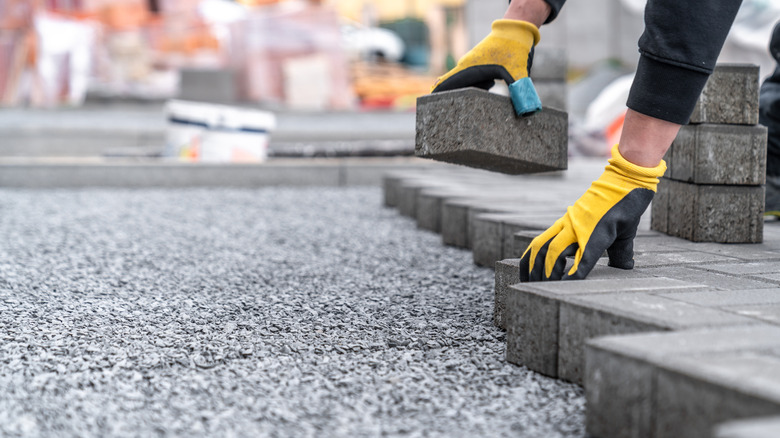Here's How Japan Is Turning Footsteps Into Electricity
Japan lives in a cyberpunk-styled future that twines tech in the most mundane of things. You can find robots performing repetitive tasks at restaurants, like peeling a banana or frying chips, while the bullet train zips past cities at a whopping 200 mph. The tech-inclined nation even has futuristic toilets that can measure your blood pressure and protein content while you are on the loo. Japan even holds the world record for the fastest internet at 1.02 Petabits-per-second. Another excellent example of Japanese innovation is the piezoelectric sidewalks that turn footsteps into electricity.
Japan is a small nation with a fairly high population density. For comparison, the U.S. is almost 26 times bigger than Japan, but it only has roughly three times Japan's population. This high population density gives rise to crowded streets and subway stations like the Shinjuku Station in Tokyo, which sees over 3.8 million passengers every day. Rather than treating such high footfall as a liability, Japan has harnessed footsteps to generate renewable electricity since 2008. Piezoelectric tiles work by converting the mechanical energy from a footstep into electrical energy that can be stored for later use. That said, this seemingly perfect source of power hasn't yet become mainstream in other parts of the world. Let's understand piezoelectric generation and some of its current downsides.
Japan's sidewalks use piezoelectric tiles
While Japan's implementation of piezoelectric tiles is new, the underlying technology itself dates back to the late 19th century. The Curie brothers discovered that pressing substances like quartz, topaz, sugarcane, and more induced a voltage across the substance, known as the piezoelectric effect. The converse is also true, as piezoelectric materials also change shape or vibrate when an electric current is passed through them. Due to these properties, piezoelectric substances find use in numerous applications like quartz watches, sonars, and electricity-producing sidewalks. Common kitchen lighters, too, use a piezoelectric material to produce their characteristic spark from the pressure applied to the trigger.
Piezoelectric substances generally produce a low voltage that depends on various factors. Japan's implementation of the piezoelectric sidewalk generated around 0.1W of power when a 60kg person stepped on a tile, back in 2008. The power from one footstep isn't substantial, but the figure quickly grows when millions of people take a step in crowded places like Tokyo's Shibuya Station. Moreover, the technology has evolved, and more efficient tiles can generate up to 30W of power with each step.
Why are piezoelectric tiles niche?
The biggest roadblock that has limited piezoelectric tiles to niche applications is the high upfront cost associated with them. The cost depends on their efficiency and can range from $50 to $100. Installing a wide network of such tiles over a large area can quickly shoot up the initial investment. However, research shows that crowded areas such as subway stations are best suited for piezoelectric tiles, despite the high cost. A 2017 research even claimed that these tiles can result in up to 99.93% lower cost of electricity over the tile's lifespan, taking Cairo's busting Elshohadaa station as an example.
That said, low power output is another big factor that makes piezoelectric tiles economically unfeasible. Conventional renewable energy sources, like solar panels, have evolved over time and can generate more electricity at a much lower cost. Additionally, power generation takes a nosedive in lightly populated areas, restricting the technology to only a few busy spaces. Moreover, higher maintenance costs and frequent repairs due to enormous stress in crowded areas are other factors stopping piezoelectric tiles from becoming mainstream. That said, a high-output tile with greater durability could make its adoption economically feasible in the future.


